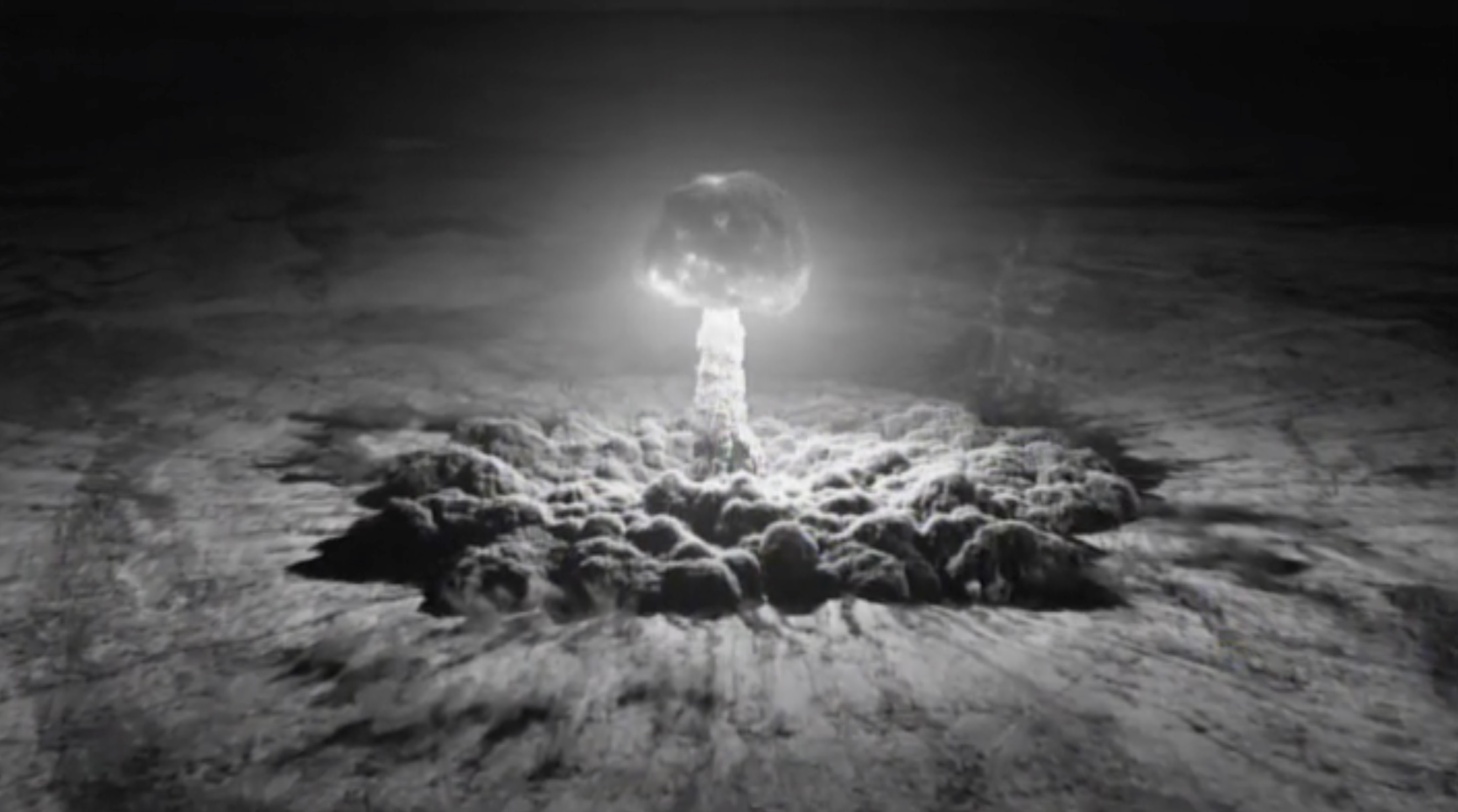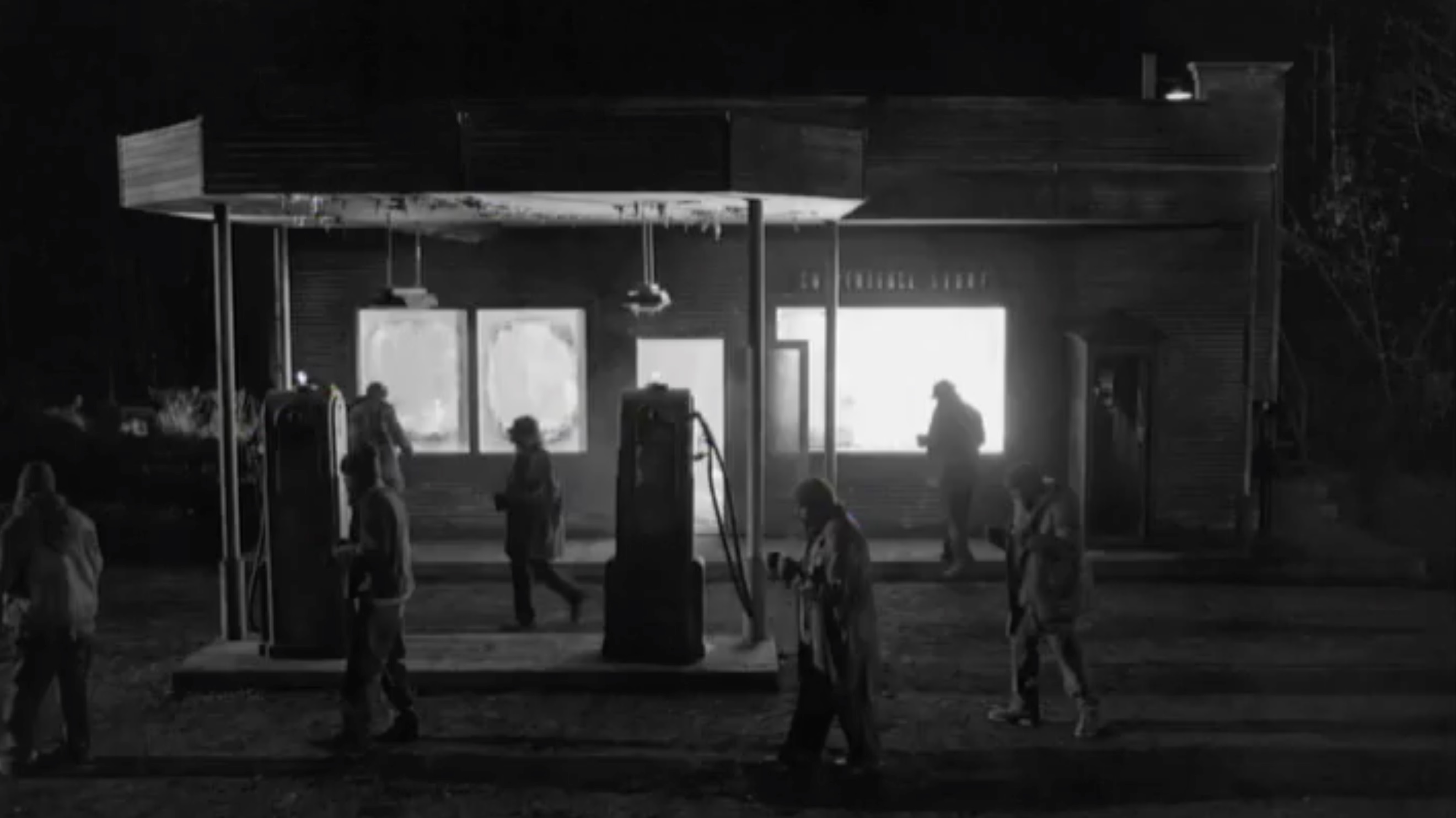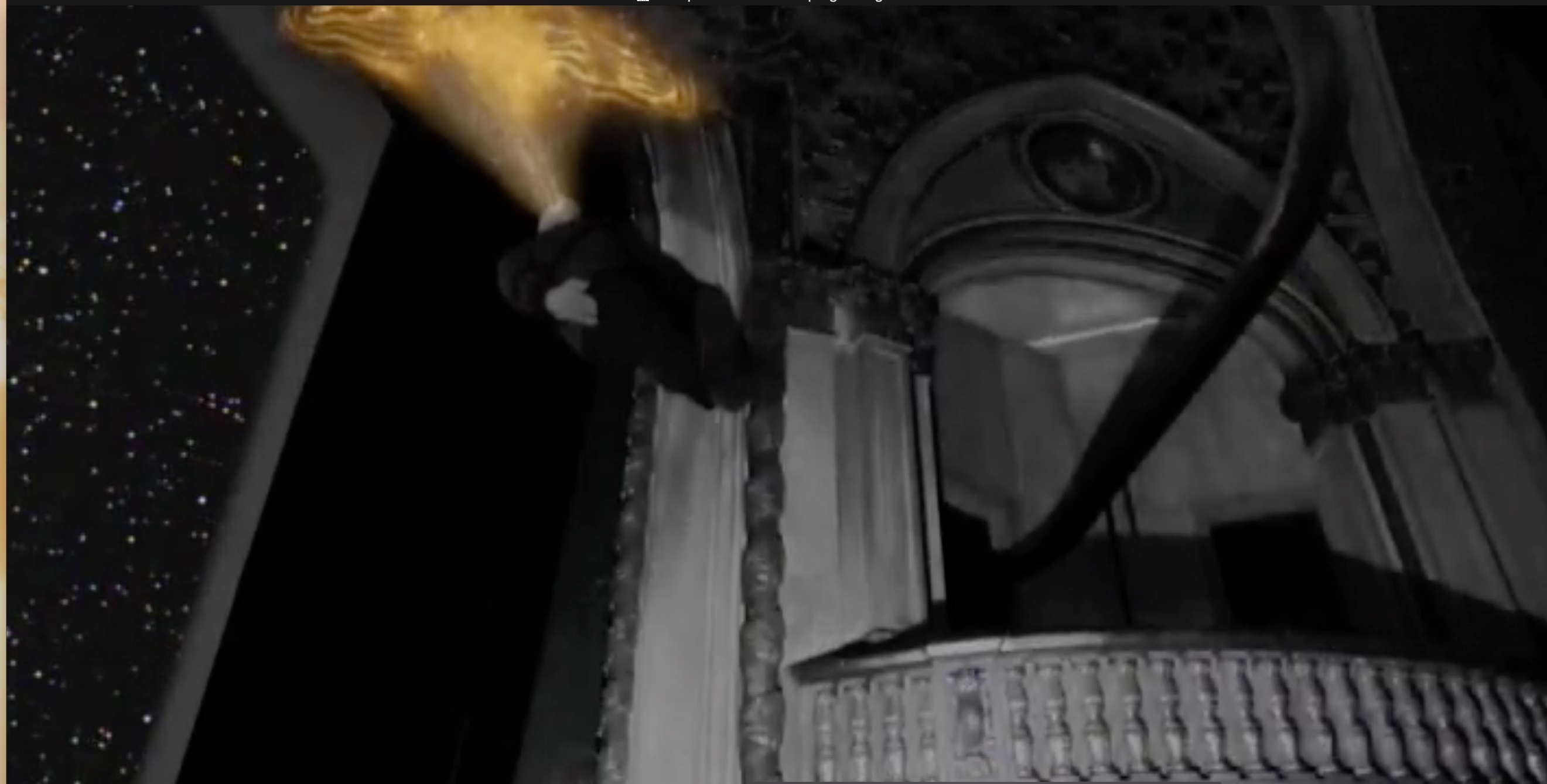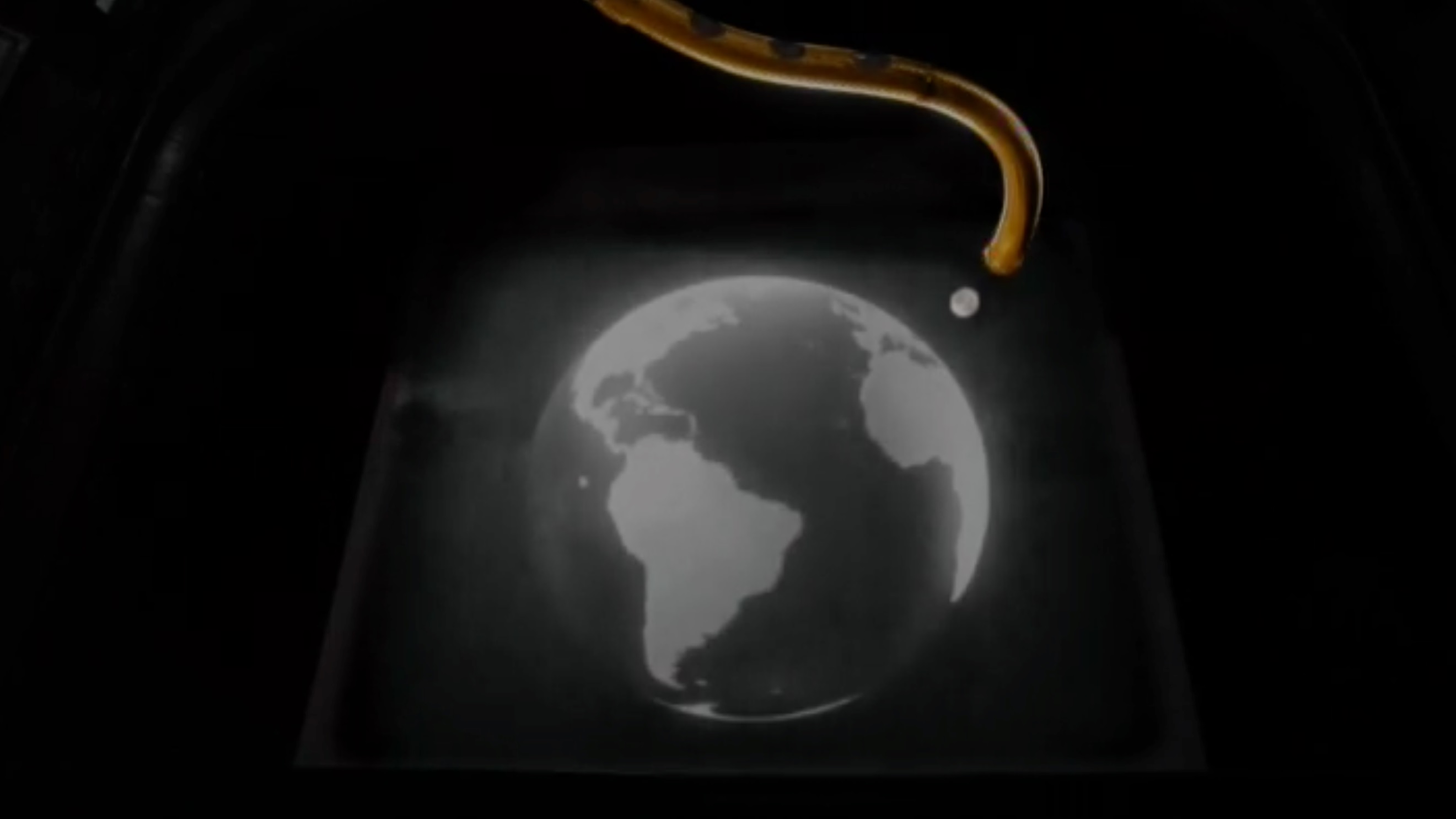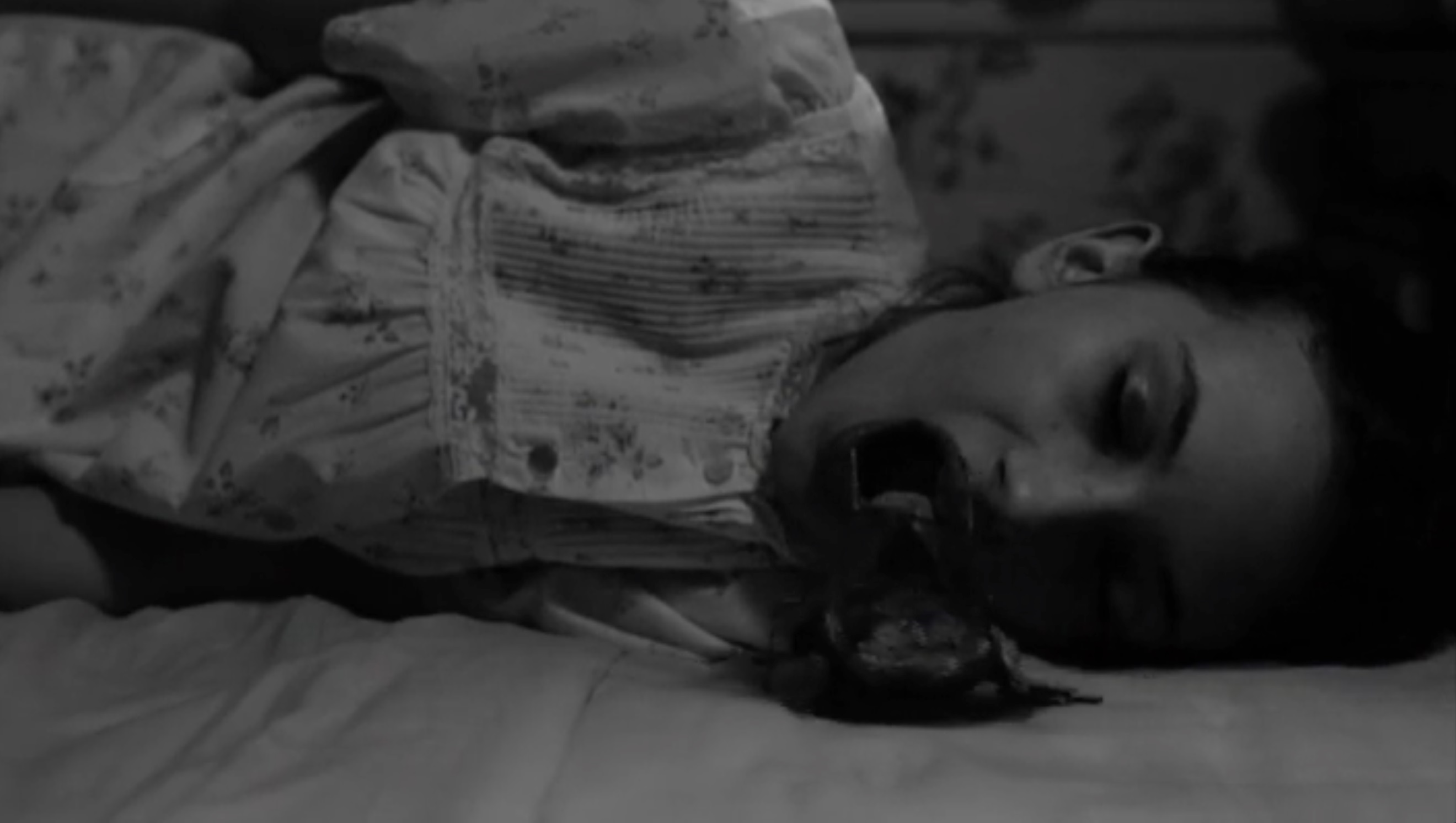“The Atomic Gambit of Twin Peaks: The Return”
Skip other details (including permanent urls, DOI, citation information)
: This work is licensed under a Creative Commons Attribution 3.0 License. Please contact [email protected] to use this work in a way not covered by the license.
For more information, read Michigan Publishing's access and usage policy.
Episode eight of Twin Peaks: The Return (2017), entitled “Gotta Light” begins with a criminal shooting the doppleganger of FBI Agent Dale Cooper (Kyle MacLachlan). However, a set of ghouls immediately begin work on repairing evil Cooper’s wounds. Shortly thereafter, the episode leaves behind narrative rationality.
A superimposed title tells us that we have flashed back to July 1945, the date of the American atomic bomb test. From an aerial position, the camera tracks forward into the mushroom atop the atomic cloud. We enter a quantum world, which David Lynch presents as if it were an experimental film made by Stan Brakhage, whose influence on 2001: A Space Odyssey (1968) David James tracks in Allegories of Cinema (1989).[1] Particulate matter swirls until the camera arrives at a cellular nucleus.
“Gotta Light” confirms James’ analysis: the subject of the nuclear age, the focus of Dr. Strangelove (1964), morphs into the science-fiction of 2001, by way of Stan Brakhage’s 1960s avant-garde filmmaking. Lynch’s sequence is accompanied by music which seals the critical analysis of Stanley Kubrick films, Krzysztof Penderecki’s “Threnody to the Victims of Hiroshima” (1960). While Lynch has frequently used Penderecki music in his other work—Wild at Heart (1990) and Inland Empire (2006)—the composer’s work is most famously deployed cinematically on the soundtrack of Kubrick’s The Shining (1980). This reveals the hidden backstory of Twin Peaks: The murder of Laura Palmer has its roots in the creation of American evil, the development of atomic weapons. As The Shining’s hotel was built atop the grounds of Indian massacres, the plot of Twin Peaks emerges from a more recent sin of the United States government, the deployment of nuclear weapons.
We then see a static shot of a convenience store with two gas pumps out front. One can only assume that this is the location Mike (Al Strobel), the one-armed man from the original Twin Peaks, spoke of twenty-five years ago. A convenience store was where Mike and Killer Bob lived together before Bob came to the Pacific Northwest and began killing errant young women. Lynch intercuts footage of the convenience store, perhaps located within or near the atomic test site, with more experimental cinema. The ghouls wander around outside, in black and white stop motion. Scratches on the soundtrack accompany their ethereal and threatening behavior. The sequence closes with a primordial body floating in black space. His mouth spews white goo, inside of which are suspended eggs floating like isolated planets or cells. Out of the nucleus of one of these emerges a golden orb. The surrounding dots of particulate matter speed past us, again invoking the visual design of Dave Bowman’s trip through the star gate in 2001.
Unexpectedly, we visit a fortress inside of which is a Giant (Carel Struycken), the helpmate who kept visiting Agent Cooper in his quest to catch killer Bob on the original show. The Giant enters a screening room to witness the atomic bomb test. He notices Bob’s face in one of the orbs.
In reaction, the Giant ascends into the air. Bob’s face is frozen on the view screen. Golden light spews out of the giant’s head. A new orb descends to a woman, who holds it in her hands. Inside is the visage of Laura Palmer. After kissing the orb, the woman releases it into the air like a balloon. The orb travels into a floating tube, which dumps Laura’s ball onto a map of the Earth. The ball heads toward the Pacific Northwest.
While the aesthetic design of Twin Peaks: The Return seems trapped in the 1960s world of Stanley Kubrick and Stan Brakhage, it leads us narratively and thematically with great precision toward an explanation for the backstory of Twin Peaks. Lynch is retelling the story of the science-fiction film, The Day the Earth Stood Still (1951). According to Peter Biskind, in that radical, Leftist film, aliens arrive from outer space, assigned to destroy the Earth because of our experiments with atomic warfare.[2] The alien ambassador explains to an Albert Einstein stand-in, that unless he can convince the world’s superpowers to cease their atomic testing, his people will be forced to destroy the Earth, to keep the rest of the Universe safe. The scientist commits an act, which in the McCarthyite 1950s is an act of treason; he collaborates with the alien to contact his colleagues in the Soviet Union. Similarly, the Giant in Twin Peaks: The Return seems to be an alien whose job it is to intervene in Earthly affairs once the atomic bomb liberates Killer Bob from the primordial ooze. The unexpected weapon he delivers is Laura Palmer, not a heroic figure by any means, but to us a symbol of an American tragedy.
In Hiroshima in America, Robert J. Lifton and Greg Mitchell argue that the dropping of the atomic bombs on Hiroshima and Nagasaki represents the foundation of contemporary American malaise.[3] No longer the repository of freedom, but instead mass murder, the nation forced itself into historical amnesia. The film art of Kubrick and now Lynch are antidotes to this process of repression, a gesture of hope for redeeming the original, redemptive project of the United States.
The episode “Gotta Light” ends in 1956, with a boy and a girl out on a date. Here, Lynch returns to the design of Blue Velvet (1986), in which small town America is besieged by film noir violence. In Twin Peaks: The Return, he extends the collision of quaint life in the United States, not this time with generic violence, but instead with global nuclear annihilation. One of the ghouls enters a radio station repeating the phrase, “Gotta light,” which seems not to be asked as an interrogative, as if wanting to ignite a cigarette, but instead as a declarative threat. Once the atomic bomb has been released from the genie’s bottle, we must burn.
The girl, sitting on her bed after returning from her date, lies down and falls asleep. The episode ends with a bug-like creature, which crawls out of the irradiated desert like a lizard, climbing into the sleeping girl’s mouth. Completely unexpectedly, “Gotta Light” offers an antidote to the repression of the United States’ atomic culpability, something that has been very hard for the populace to swallow.
Author Biography
A long-time member of the editorial board, and now co-editor of the journal, Walter Metz is also the editor of the bi-monthly film and television reviews feature of Film Criticism. He is a professor in the Department of Cinema and Photography at Southern Illinois University in Carbondale.
Notes
James, David. Allegories of Cinema: American Film in the Sixties. Princeton: Princeton UP, 1989.

Biskind, Peter. Seeing is Believing: How Hollywood taught us to stop worrying and love the Fifties. New York: Pantheon, 1983.

Lifton, Robert J. and Greg Mitchell. Hiroshima in America. New York: Harper Perennial, 1996.



